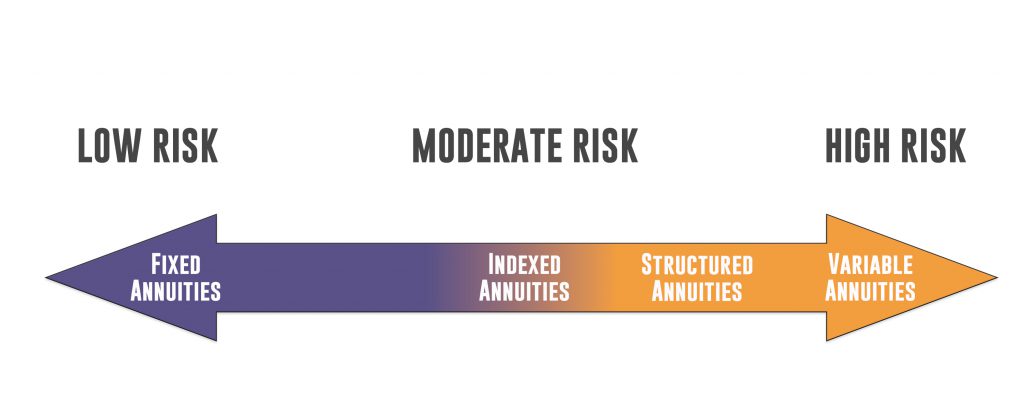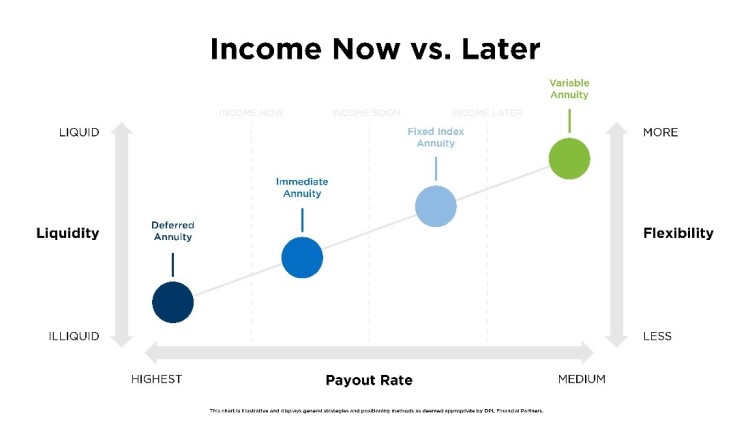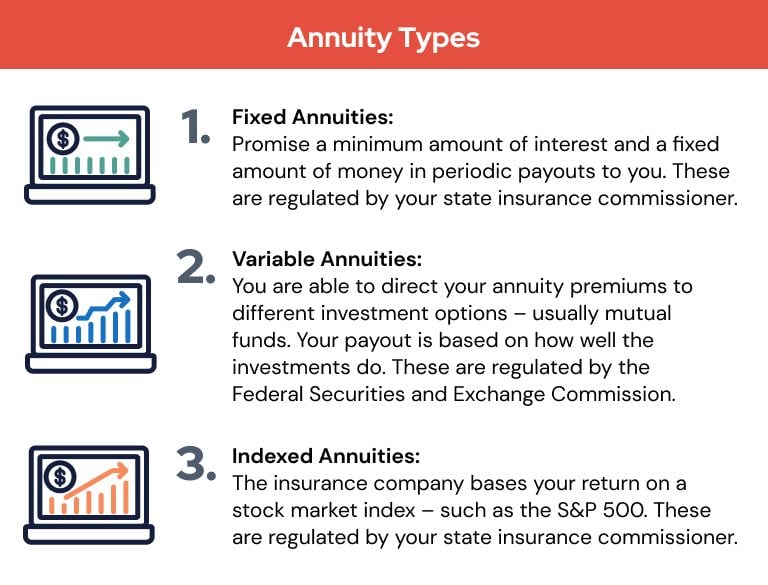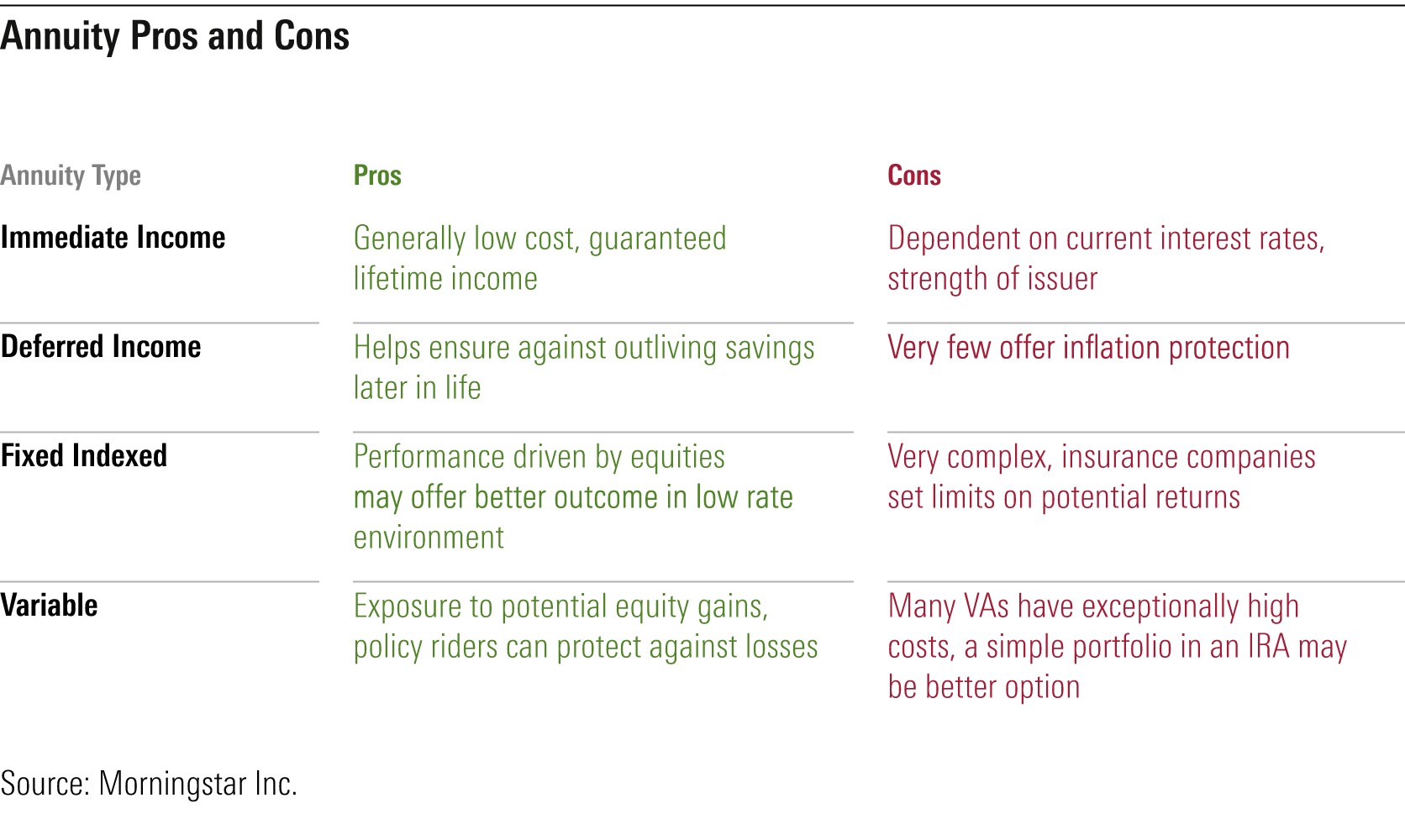All Categories
Featured
Table of Contents
Equally as with a repaired annuity, the proprietor of a variable annuity pays an insurer a lump amount or collection of repayments in exchange for the guarantee of a collection of future repayments in return. But as mentioned over, while a repaired annuity grows at an ensured, continuous rate, a variable annuity grows at a variable rate that depends upon the performance of the underlying financial investments, called sub-accounts.

During the accumulation phase, possessions bought variable annuity sub-accounts expand on a tax-deferred basis and are exhausted only when the contract owner withdraws those earnings from the account. After the accumulation phase comes the income stage. Gradually, variable annuity properties ought to theoretically increase in value until the contract owner chooses he or she would like to start withdrawing cash from the account.
The most considerable concern that variable annuities normally existing is high cost. Variable annuities have a number of layers of charges and costs that can, in aggregate, produce a drag of as much as 3-4% of the contract's worth annually. Below are one of the most typical charges connected with variable annuities. This expenditure makes up the insurance company for the threat that it thinks under the terms of the contract.
Breaking Down Your Investment Choices Everything You Need to Know About Variable Annuities Vs Fixed Annuities What Is What Is Variable Annuity Vs Fixed Annuity? Features of Immediate Fixed Annuity Vs Variable Annuity Why Choosing the Right Financial Strategy Is Worth Considering Annuities Fixed Vs Variable: Simplified Key Differences Between What Is A Variable Annuity Vs A Fixed Annuity Understanding the Key Features of Fixed Income Annuity Vs Variable Growth Annuity Who Should Consider Fixed Vs Variable Annuity Pros And Cons? Tips for Choosing the Best Investment Strategy FAQs About What Is A Variable Annuity Vs A Fixed Annuity Common Mistakes to Avoid When Choosing a Financial Strategy Financial Planning Simplified: Understanding Your Options A Beginner’s Guide to Smart Investment Decisions A Closer Look at Immediate Fixed Annuity Vs Variable Annuity
M&E cost costs are computed as a portion of the contract value Annuity companies pass on recordkeeping and other administrative expenses to the agreement proprietor. This can be in the type of a flat yearly charge or a portion of the agreement value. Administrative costs might be consisted of as part of the M&E danger fee or might be examined separately.
These charges can vary from 0.1% for passive funds to 1.5% or even more for actively managed funds. Annuity agreements can be tailored in a variety of ways to serve the certain demands of the contract owner. Some typical variable annuity bikers consist of guaranteed minimum buildup advantage (GMAB), ensured minimum withdrawal advantage (GMWB), and assured minimal revenue benefit (GMIB).

Variable annuity payments supply no such tax obligation reduction. Variable annuities tend to be highly inefficient cars for passing wealth to the future generation since they do not appreciate a cost-basis modification when the original agreement owner passes away. When the proprietor of a taxable investment account dies, the cost bases of the financial investments kept in the account are changed to reflect the marketplace costs of those investments at the time of the proprietor's fatality.
Highlighting the Key Features of Long-Term Investments A Comprehensive Guide to Fixed Income Annuity Vs Variable Annuity What Is Annuity Fixed Vs Variable? Benefits of Choosing the Right Financial Plan Why Choosing the Right Financial Strategy Is Worth Considering Fixed Vs Variable Annuity: A Complete Overview Key Differences Between Fixed Annuity Or Variable Annuity Understanding the Risks of Long-Term Investments Who Should Consider Strategic Financial Planning? Tips for Choosing the Best Investment Strategy FAQs About Planning Your Financial Future Common Mistakes to Avoid When Choosing Fixed Income Annuity Vs Variable Growth Annuity Financial Planning Simplified: Understanding Your Options A Beginner’s Guide to Variable Annuity Vs Fixed Annuity A Closer Look at Fixed Index Annuity Vs Variable Annuity
Consequently, beneficiaries can inherit a taxable financial investment profile with a "clean slate" from a tax obligation viewpoint. Such is not the instance with variable annuities. Investments held within a variable annuity do not get a cost-basis adjustment when the original proprietor of the annuity passes away. This indicates that any kind of gathered unrealized gains will be passed on to the annuity proprietor's successors, along with the connected tax concern.
One significant issue connected to variable annuities is the possibility for problems of interest that might feed on the component of annuity salesmen. Unlike a financial expert, that has a fiduciary task to make financial investment choices that profit the client, an insurance broker has no such fiduciary responsibility. Annuity sales are very rewarding for the insurance specialists that market them as a result of high upfront sales compensations.

Several variable annuity contracts have language which positions a cap on the portion of gain that can be experienced by certain sub-accounts. These caps avoid the annuity proprietor from totally getting involved in a portion of gains that can or else be enjoyed in years in which markets produce significant returns. From an outsider's perspective, presumably that capitalists are trading a cap on investment returns for the aforementioned guaranteed floor on investment returns.
As noted above, give up charges can drastically restrict an annuity proprietor's capability to move assets out of an annuity in the very early years of the contract. Even more, while most variable annuities allow agreement proprietors to withdraw a defined amount during the accumulation phase, withdrawals past this amount generally lead to a company-imposed charge.
Withdrawals made from a fixed rates of interest financial investment choice can likewise experience a "market price modification" or MVA. An MVA readjusts the value of the withdrawal to show any type of modifications in rate of interest rates from the moment that the cash was purchased the fixed-rate choice to the moment that it was taken out.

Rather frequently, also the salesmen who sell them do not completely comprehend exactly how they work, therefore salespeople in some cases victimize a customer's emotions to sell variable annuities as opposed to the benefits and suitability of the products themselves. We think that financiers need to totally comprehend what they own and exactly how much they are paying to own it.
Analyzing Variable Vs Fixed Annuities A Closer Look at Pros And Cons Of Fixed Annuity And Variable Annuity Breaking Down the Basics of Investment Plans Advantages and Disadvantages of Fixed Annuity Vs Equity-linked Variable Annuity Why Deferred Annuity Vs Variable Annuity Can Impact Your Future How to Compare Different Investment Plans: Simplified Key Differences Between Different Financial Strategies Understanding the Risks of Long-Term Investments Who Should Consider Strategic Financial Planning? Tips for Choosing Retirement Income Fixed Vs Variable Annuity FAQs About Choosing Between Fixed Annuity And Variable Annuity Common Mistakes to Avoid When Planning Your Retirement Financial Planning Simplified: Understanding Your Options A Beginner’s Guide to Tax Benefits Of Fixed Vs Variable Annuities A Closer Look at How to Build a Retirement Plan
The exact same can not be said for variable annuity possessions held in fixed-rate investments. These assets lawfully belong to the insurance policy company and would therefore be at threat if the company were to fail. In a similar way, any assurances that the insurance provider has concurred to offer, such as an ensured minimum income benefit, would remain in question in case of a business failure.
Potential buyers of variable annuities must comprehend and think about the financial problem of the issuing insurance coverage firm before entering into an annuity contract. While the advantages and disadvantages of various kinds of annuities can be disputed, the actual concern bordering annuities is that of suitability. In other words, the inquiry is: who should possess a variable annuity? This inquiry can be challenging to address, given the myriad variants offered in the variable annuity cosmos, however there are some basic guidelines that can aid investors decide whether annuities ought to play a duty in their monetary plans.
As the saying goes: "Customer beware!" This short article is prepared by Pekin Hardy Strauss, Inc. Annuities for conservative investors. ("Pekin Hardy," dba Pekin Hardy Strauss Wide Range Administration) for informational purposes just and is not planned as an offer or solicitation for business. The information and information in this article does not make up legal, tax obligation, audit, investment, or various other expert suggestions
Table of Contents
Latest Posts
Analyzing Strategic Retirement Planning Everything You Need to Know About Financial Strategies What Is the Best Retirement Option? Pros and Cons of Annuities Variable Vs Fixed Why Choosing the Right F
Exploring Variable Annuity Vs Fixed Indexed Annuity Key Insights on Your Financial Future What Is Variable Annuities Vs Fixed Annuities? Advantages and Disadvantages of Different Retirement Plans Why
Understanding Tax Benefits Of Fixed Vs Variable Annuities A Closer Look at Annuities Fixed Vs Variable Defining the Right Financial Strategy Benefits of Choosing the Right Financial Plan Why Variable
More
Latest Posts